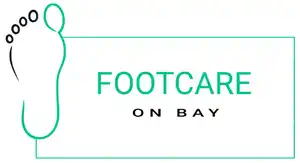Ball of Foot Pain (Metatarsalgia) Treatment in Toronto
Ball of Foot Pain (Metatarsalgia): Causes, Relief, and When to Get Help
Pain in the ball of your foot can make every step feel like a struggle. Whether you’re walking, running, or just standing, that burning or aching sensation under your toes can wear you down fast.
This common condition is called metatarsalgia – and it affects people of all ages, especially those who are active or spend long hours on their feet.

What Is Metatarsalgia?
Metatarsalgia refers to pain and inflammation in the ball of the foot – the area just behind your toes where the metatarsal bones are located. It’s not a specific injury but a symptom caused by excessive stress in that region.
Common Symptoms of Metatarsalgia:
- Sharp, aching, or burning pain in the ball of the foot
- A sensation like stepping on a pebble
- Pain that worsens with standing, walking, or running
- Tingling or numbness in the toes
- Swelling or tenderness under the foot
The pain can range from mild to severe and may limit your ability to walk or stand comfortably.
Your Feet Deserve Professional Care
Book your appointment today and take the first step toward healthier, pain-free feet.
What Causes Ball of Foot Pain?
The pain usually results from excess pressure on the metatarsal bones. Common contributing factors include:
1. High-Impact Activities
- Running, jumping, or long-distance walking on hard surfaces
- Common in athletes, dancers, and runners
2. Poor Footwear
- High heels, narrow toe boxes, or worn-out soles
- Shifts body weight forward and increases stress on the forefoot
3. Foot Shape or Structure
- High arches, flat feet, or long second toes
- Biomechanics like overpronation or supination
4. Excess Weight
- Additional body weight increases pressure on the forefoot
5. Aging
- Fat pad under the ball of the foot thins with age
- Less natural shock absorption
6. Other Medical Conditions
- Bunions, hammertoes, arthritis, Morton’s neuroma
- All can contribute to increased forefoot stress
How Common Is Metatarsalgia?
Metatarsalgia is one of the most common foot complaints in both active and older adults. Around 30% of adults over age 50 report forefoot pain, often due to this condition.
It’s frequently seen in runners, dancers, and sports participants who train on hard surfaces or wear minimal footwear.
What Our Customers Say
At-Home Relief and Daily Care Tips
If your pain is mild or recent, try these steps:
1. Rest and Ice
- Sit or elevate your feet when possible
- Apply ice for 10–15 minutes, 2–3 times per day
2. Change Your Shoes
- Avoid narrow shoes and high heels
- Choose supportive shoes with cushioned soles and a wide toe box
- Rocker-bottom soles may help reduce impact
3. Use Padding or Inserts
- Metatarsal pads can relieve pressure
- Gel insoles or arch supports add extra cushioning
4. Stretch and Strengthen
- Stretch calves and toes to improve flexibility
- Strengthen arch and ankle muscles for better stability
5. Modify Your Activity
- Avoid high-impact exercises temporarily
- Switch to cycling or swimming during recovery

Real-Life Success Story
James, a 41-year-old recreational runner, developed burning under his toes while training for a half marathon. By switching to cushioned shoes, using metatarsal pads, and stretching daily, he returned to running pain-free in just a few weeks.
When to See a Podiatrist
If pain doesn’t improve after a few weeks of care or worsens, it’s time to seek help.
What a Podiatrist Can Do:
- Perform a gait analysis
- Evaluate foot structure and rule out arthritis
- Prescribe custom orthotics
- Recommend physical therapy
- Administer cortisone injections for inflammation
- Rule out stress fractures or nerve conditions
Advanced Treatment Options
For persistent or severe pain, your podiatrist may recommend:
1. Custom Orthotics
- Tailored inserts to redistribute pressure and correct mechanics
2. Physical Therapy
- Exercises and manual therapy to improve gait and foot strength
3. Shockwave Therapy
- Non-invasive treatment that stimulates healing
4. Corticosteroid Injections
- Reduces inflammation for short-term relief
5. Surgery
- Considered only for deformities or nerve issues unresponsive to other care
Prevention Strategies for Long-Term Relief
Choose Proper Footwear
- Wide toe box and arch support
- Replace shoes every 300–500 miles
- Avoid high heels and unsupportive footwear
Maintain a Healthy Weight
- Reduces pressure on the forefoot
Strengthen and Stretch
- Daily stretching for calves and feet
- Strengthen foot muscles to maintain alignment
Gradually Increase Activity
- Avoid rapid increases in intensity or duration
Use Protective Padding
- Metatarsal pads or gel inserts during activity
Frequently Asked Questions (FAQs)
Can metatarsalgia heal on its own?
Mild cases often improve with rest, better footwear, and padding.
Is walking barefoot bad for this condition?
Yes. Barefoot walking on hard floors increases pressure on the forefoot.
Do I need surgery?
Rarely. Surgery is only considered when other treatments fail and deformity is present.
Can I keep exercising with this pain?
Avoid high-impact activities. Stick to low-impact workouts like swimming or cycling.
What’s the difference between metatarsalgia and Morton’s neuroma?
Both cause forefoot pain, but neuroma involves nerve irritation between the toes.
How do custom orthotics help?
They support foot alignment and distribute pressure more evenly.
Can weight loss help?
Yes. Less body weight reduces stress on the metatarsal region.
How long does recovery take?
With proper care, recovery usually takes 4–8 weeks. Chronic cases may take longer.
Ball of foot pain can make daily life difficult, but it’s highly treatable. With the right footwear, inserts, stretching, and rest, many people find relief without advanced medical intervention.
If the pain lingers or keeps coming back, don’t ignore it. A podiatrist can diagnose the cause and create a plan that gets you back on your feet – comfortably and confidently.
Looking for better foot support? We're just around the corner.
Call us today at
